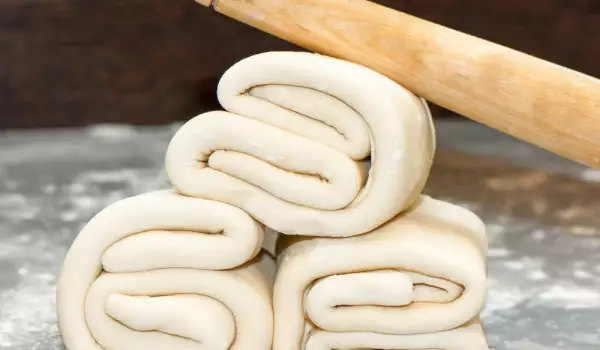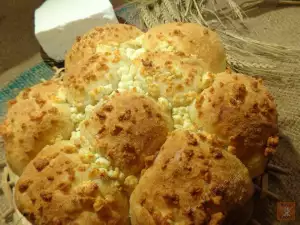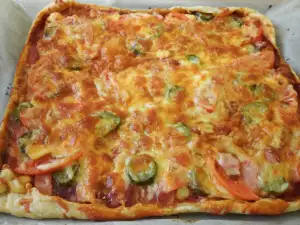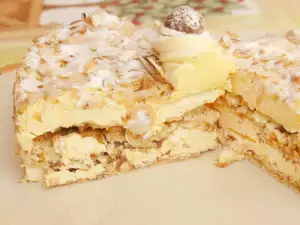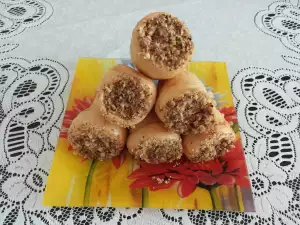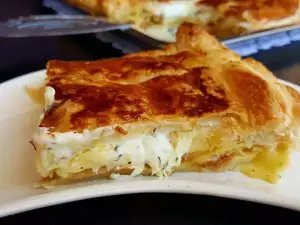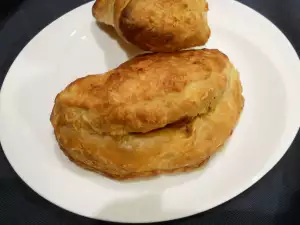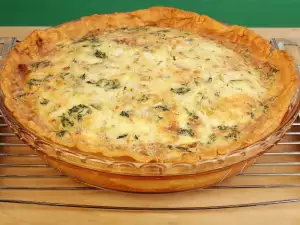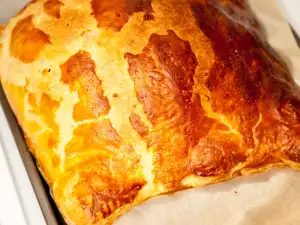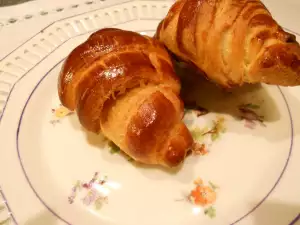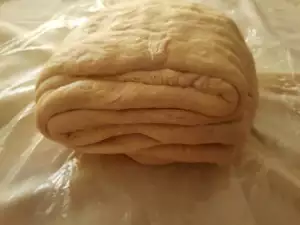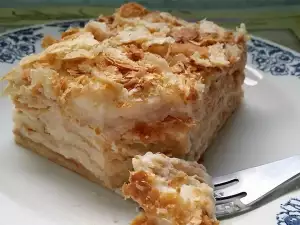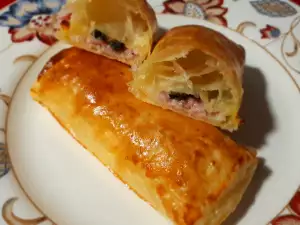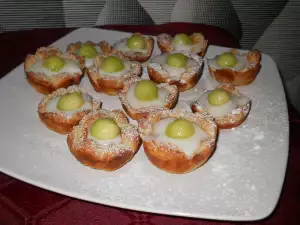How to make
For the 1st part, mix together the flour and salt, gradually add the water and knead a stretchy dough, then wrap it in plastic wrap and put it in the fridge.
For the 2nd part, put 2 packets of butter between 2 baking paper sheets and roll it out into a thinner layer using a rolling pin. Cut it into pieces and mix it with the flour in a bowl, stir with the mixer on low to obtain a homogeneous mixture. Put it between 2 baking paper sheets and roll it out to a 1/2″ (1 cm) thick sheet, then put it in the fridge for 1 hour. Take it out, beat with the mixer again, roll it out between the baking paper sheets and return to the fridge for 1 hour.
Roll out the dough with a little flour into a rectangle, place the square of the buttery mixture in the middle of it, flattening it with your hands slightly so that you obtain 2 wide parts and 2 narrower ones along the sides. Fold the wider parts inward toward the dough in order to cover the buttery mixture.
Roll it out with the rolling pin to about 1/2″ (1.5 cm) thick. Rotate the whole thing 90 degrees. Every time you roll it out and fold, rotate 90 degrees before repeating the process. Fold it into 3 layers, i.e. fold one end of the dough 1/3 of the length in, then fold the other end to cover it.
Roll it out with the rolling pin again. Rotate 90 degrees. Fold both ends in toward the middle, then one half over the other. Wrap with plastic wrap and return to the fridge for 15 min. Take it out, fold into 3 layers again, roll out, fold into 2 toward the middle, with 1 end over the other and back to the fridge for 1 hour. It's ready. You now have puff pastry.
Whenever you're rolling it out later to make baked goods, use a front-back motion, never sideways, so the layers' structure doesn't get ruined. When cutting puff pastry you need a very sharp knife. That way the layers won't stick and will be able to spread out during baking. When using a filling, don't smear the edges with egg because it's not going to unfurl properly.
After putting the filling in the puff pastry, make holes in it with a fork in several spots so it bakes well and there's no bubbles in the puff pastry. Don't smear it with oil, it has plenty of butter. If you're still worried about it sticking, sprinkle a little flour in a baking paper sheet after placing it at the bottom of the tray. Some master bakers even recommend wetting the tray with a little water to make the baked goods more airy once it evaporates. Be sure to heat the oven before baking. Don't open it during baking.
The proper time for baking puff pastry is 5-10 min. at 430°F (220 °C), then another 15-20 min. at 360°F (180 °C). Of course it depends on the bakery goods themselves, how large they are. Bake smaller ones at a higher temperature and larger ones at a lower temperature but always within 70°F (20 °C) (+/-) of the listed temperature.
